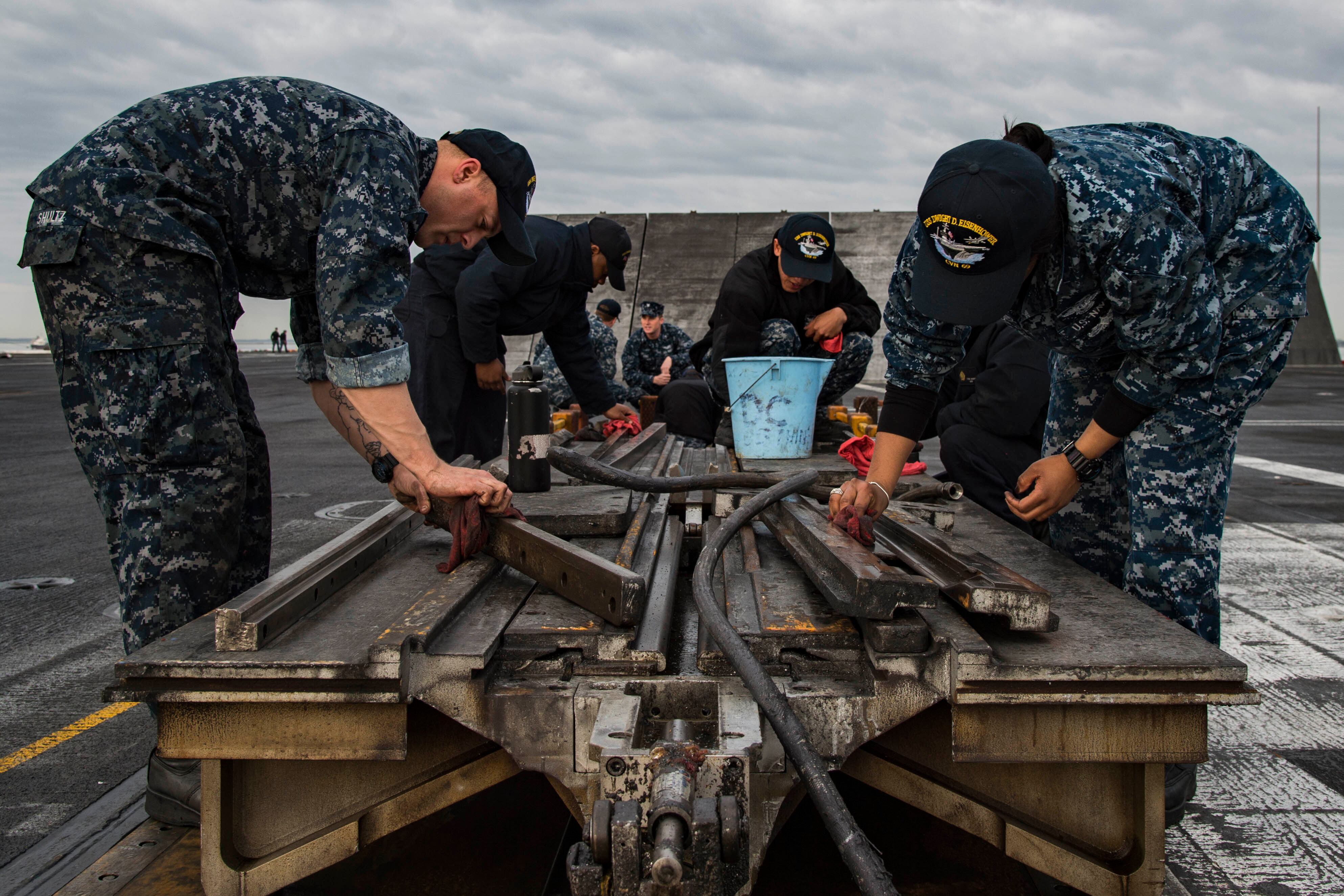Congress can either pass a budget or accept a degraded and increasingly hollow Navy, a top Navy admiral said Monday.
The short-term deal funding the government is due to expire at the end of this month.
If Congress fails to pass a new budget for 2017 but relies instead on a yearlong stopgap measure -- known as a continuing resolution, or "CR" -- it will cut into how many ships the Navy can afford to get underway and how many aircraft it can afford to put in the air, said Adm. Bill Moran, vice chief of naval operations.
Furthermore, it would prompt the Navy to put off maintenance and that would mean more broken ships and aircraft that couldn't get underway even if they had the money.
"A full-year continuing resolution at this point implies a lot of things," Moran said at the outset of the annual industry conference at National Harbor, Maryland.
"With two thirds of the year gone, we've spent all the free cash we have to do things like deploy, to operate, to do maintenance," Moran said. "If we don't see a budget by the end of this month and we go into a full-year CR, we're going to have to defer a whole bunch of things."
The problem the Navy faces is that seven months into fiscal year 2017, Congress still hasn't passed a budget and has shown very little ability to pass anything at all. The Navy was supposed to get a plus-up in 2017. But a stopgap spending bill, or continuing resolution, would lock in lower spending levels carried over from 2106, which would be devastating to the Navy for the rest of the year, Moran said.
The cuts would have a long-term impact on training pipelines and manning in the fleet, meaning sailors will have to accept more work with less help. If Congress passes the CR, ships would have to cancel underway periods and fighters will be spending more time on the tarmac.
"We'll have to slow down some of the steaming operations around the globe where we've got folks deployed today," Moran said. "We'll have to slow down flight operations at those same locations. We'll have to slow down training at our fleet replacement squadrons who are training new pilots to come into the fleet, which will mean manning gaps in squadrons around the fleet down the line."
Moran also lamented the smaller size of the fleet, which contrasts with the Navy's growing level of responsibility.
"We are significantly smaller than we were just a few years ago," Moran said. "But we have the same level of commitment around the globe with a smaller Navy. You do the math -- you are going to wear out that Navy fast, much faster than we planned for."
President Trump has committed to building a 350-ship fleet, but the concept will meet resistance on Capitol Hill, where the raging debate over spending priorities that created the budget cuts of the past half-decade show no signs of clearing despite the Republican's control of both chambers. Republicans continue to battle internally about whether to prioritize defense spending or reductions to overall government spending and debt.
The Navy League's SeaAirSpace conference runs through Wednesday.
David B. Larter was the naval warfare reporter for Defense News.
More In








